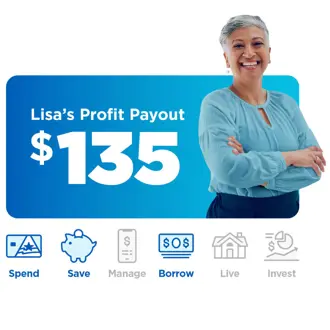Retirement Planning

Retirement Planning Starts Here
Retirement can mean different things to different people, and we understand that your goals are unique. Often times, the difference between succeeding or failing to achieve those goals is the result of an accumulation of small decisions made along the way. To make the right choices when faced with those decisions, it helps to have a plan in place.Crafting a good retirement plan requires clearly defined goals, an honest assessment of where you are financially and the willingness to focus on the long term. CommunityAmerica Wealth Management will work with you wherever you are on your journey to consider your dreams, evaluate your current financial situation and provide perspective to help make decisions for the future. Whether you’re just starting to save, nearing that retirement party or dealing with any of the transitional moments along the way, our Wealth Advisors are here to help you reach your goals.
With a number of savings options available, such as IRAs and annuities, we can work with you to develop a plan that allows you to accumulate, enjoy and, eventually, share what you worked so hard to build.
IRA Comparison
To Decide Which Option Is Best, Ask Yourself:
Ready to open an account? You can open an IRA account using Guided Investing, request an appointment with a Wealth Advisor or give us a call at 800.892.7957.
For specific tax advice, please consult a qualified tax professional.
Ready to get started? We’re here to help.
Contact a Wealth AdvisorRun a Business?
Your Personalized Plan
Prepare for your financial “now” and your financial future.
Everyone’s financial goals are unique. We’re here to help you reach yours. Our Wealth Advisors can guide your short- and long-term plans to achieve financial peace of mind.Calculators
Profit Payout*
Investing in YOU by sharing our profits.
Securities and advisory services offered through Copper Financial Network, LLC (“Copper Financial”), a broker-dealer and SEC registered investment adviser. Member FINRA/SIPC. Copper Financial is a wholly-owned subsidiary of CommunityAmerica Federal Credit Union (“CommunityAmerica”) and makes non-deposit investment products and services available to its members. Representatives are registered with Copper Financial. CommunityAmerica and CommunityAmerica Wealth Management are not broker-dealers or investment advisers. For important disclosures from Copper Financial please visit here.
Copper Financial registered representatives associated with this website may discuss and/or transact business only with residents of the states in which they are properly registered or licensed.
Link to the Copper Financial Customer Relationship Summary.
|
Are Not Deposits |
Are Not NCUA or otherwise Federally Insured |
Are Not Obligations of or Guaranteed by the Credit Union |
May Lose Value |














